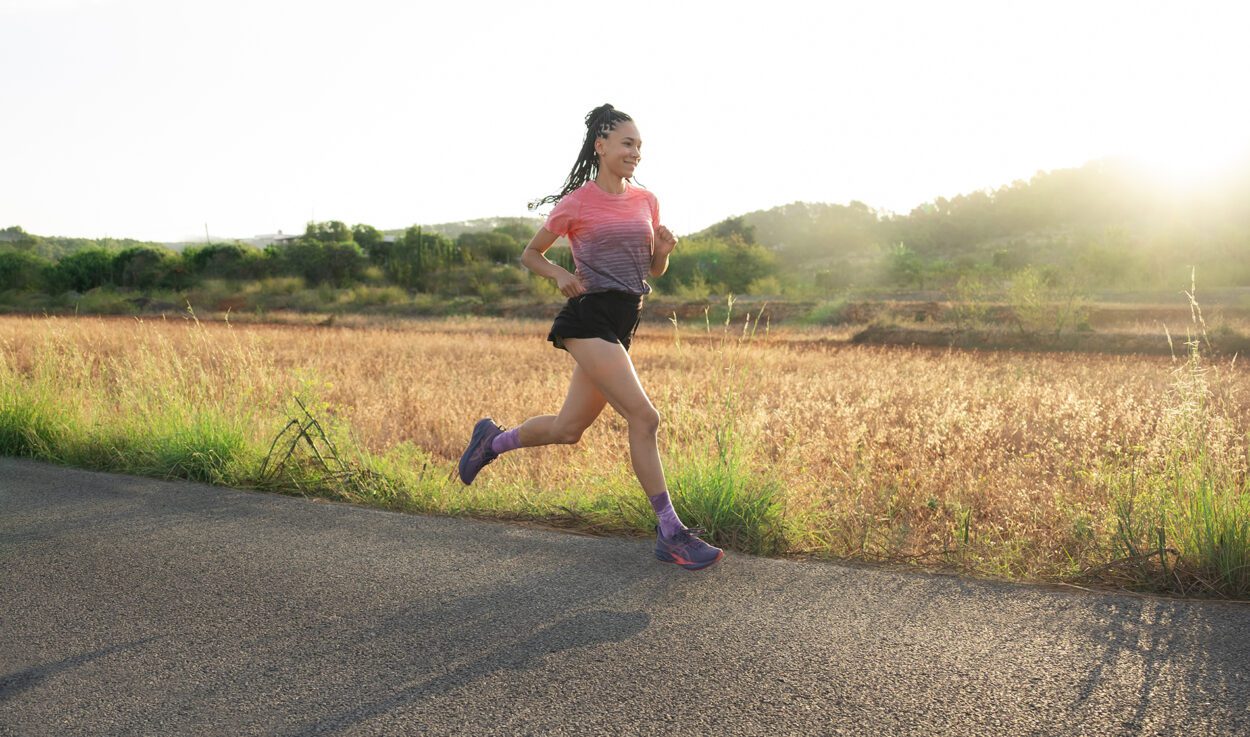We talk to Professor Brendon Stubbs about ASICS’ work in encouraging improving mental and physical health
Sound Mind, Sound Body is the belief that, every time we push our bodies, we get happier. It is the founding philosophy of ASICS – Anima Sana In Corpore Sano translates from Latin to a sound mind in a sound body – and focuses on the positive relationship between mental and physical health.
With mental health awareness much more prevalent in society, the conversation around positive wellbeing has changed for the better. However, there is still much more to do.
To delve more into this topic, AW spoke to Professor Brendon Stubbs, a world-leading researcher in exercise and mental health. He also headed up the most recent ASICS State of Mind Study – published every two years – which surveyed 26,000 people across 22 countries.
What does Sound Mind, Sound Body mean for you?
Sound Mind, Sound Body captures perfect human health. I think when we look at athletics and performance, we get so focused on times, distances and heights but we’ve only more recently looked at the impact of the mind.
We can’t have physical health without mental health now. Sound Mind, Sound Body integrates both of these domains, which are completely interwoven, to create optimal performance. That’s for an elite athlete or someone in their daily life.
Do you think the conversation around mental health has changed?
ASICS, in their founding statement, has always focused on a sound mind in a sound body but I think it’s only started to catch the public imagination in the last 10-20 years.
People used to concentrate on just increasing muscle size, bulking up and losing weight. However, that was getting away from the essence of what was fun and enjoyable about sport. If we solely relied on how fast we are and how much we can lift, then we’d be defeated over time.
What keeps you coming back time and time again is internal enjoyment. That’s a mental uplift. It’s the difference between lifelong engagement to why people crash in and out of sport. Tapping into those mental benefits is profound. It gets to the essence of the power of sport.
You led the 2024 ASICS State of Mind Study. What were your biggest takeaways from it?
The biggest conclusion that came from the most recent study is that the more people moved, the better their wellbeing and the more energised they felt. If you put these different activities into various groups, going from those who were “inactive” [less than 30 minutes of activity per day] to very active [over 150 minutes], we see this nice linear increase in their state of mind.
There were other nuances and findings within the index and I wanted to pick out two facets, such as adolescence being identified as a key period. We found that people who stopped engaging in physical activity between 15-17 years were less likely to continue sport in later life, and have lower wellbeing.
The other aspect is the gender exercise gap, which showed that males and females average 180 and 160 minutes of exercise per week respectively. We found that there were multiple barriers for females such as lack of time, additional care/responsibilities and cultural expectations.
How do we improve both facets?
On adolescence specifically, you have to allow people to have autonomy and positive experiences. If we can provide people with a choice when it comes to sport, then they’re much more likely to continue in it later on in life. If it’s a chore, it takes out that fun element. That [autonomy] will then boost your confidence because you’ve got that internal drive from thereon in.
For the gender exercise gap, there must first be recognition that it exists. Then it’s about empowerment. This is not just a female issue and as a society we need to create safe spaces and integration.

What about the elite level of sport?
At the elite level the margins can be minimal. You can get the edge through physical stature, leg power and cadence, which are actually easier to manage. However, how do athletes manage stress? How do they bounce back from failure? How do they internalise expectations and pressure? These are the skills that separate the top, elite people from those that are just under their level.
Physically there are often imperceptible differences but what happens when everything is going against you on the biggest stage? It’s about how you compose yourself in that moment.
How important is accessibility?
It’s amazing to see mass participation in running events on the up but the challenge in society is that 50 per cent of people – particularly those that are young – are not engaging in nearly enough physical activity.
The data shows that the people who are applying for such events are those that are generally already doing enough exercise. So how do we reach those people that are not experiencing the benefits of going out for a run?
What would you say to anyone in that situation?
It doesn’t take a lot to start with. Just do small amounts of movement consistently. Time can be a barrier but the research shows that even just 15 minutes and nine seconds can provide a meaningful uplift. If you compound that over time it can make a real tangible difference.
You can then look to go further or faster over time but it’s about embedding that behaviour and that takes around 66 days for it to be automated.










